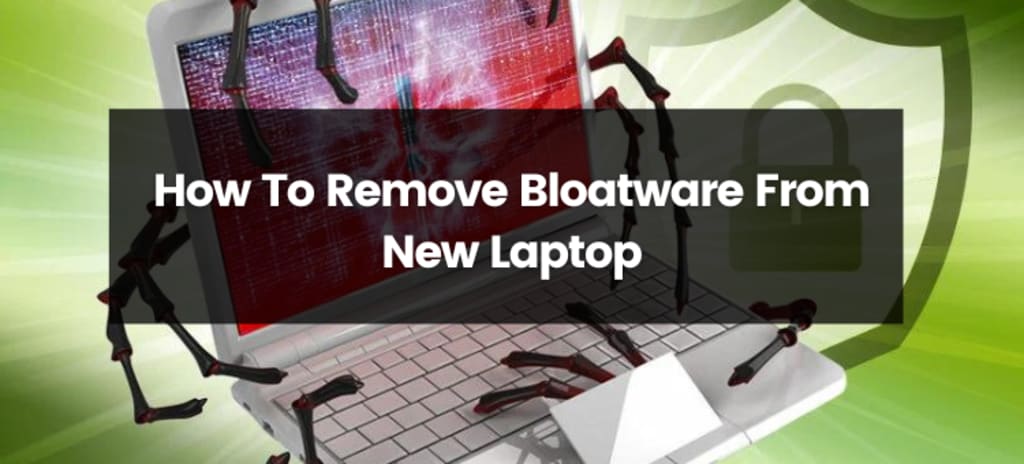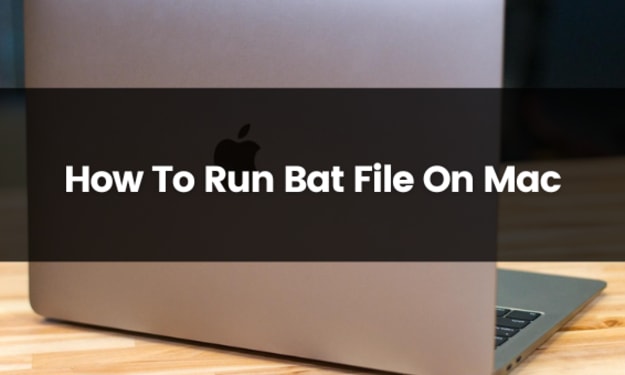How Do You Get Bloatware Off A New Laptop?
In this article, i have explained in detail How Do You Get Bloatware Off A New Laptop?

Although Windows 10 is a powerful operating system for PCs, it is not the most sophisticated one and is unavoidably full of annoying bugs. You can get rid of bloatware from your new laptop with the help of some of our helpful tips. Windows specifically throws at you if you use Windows Home.
Why Is Bloatware Required to Be Removed from a New Laptop?
Bloatware could be the reason why it takes your computer a long time to start up or why it isn't running as well as it once did. Computers struggle greatly with unfavorable programs because they consume valuable resources without offering any benefit.
It is advised to remove all bloatware from Windows because of this. To remove the more troublesome ones, you can uninstall these programs using PowerShell commands, the Start Menu's Apps and Features section, or both. Although it is advised to completely remove them, it is also possible to stop these processes as they are running.
Use a computerized program like Windows10Debloater to complete the task for you if you feel it is too complicated. Your computer is cleaned up using PowerShell scripts, which keeps the most crucial parts in tact while removing bloatware and unwanted programs. After your system has been installed with Windows for the first time, it is advised that you run the tool just once more to keep it clean and clutter-free.
How To Remove Bloatware From Your New Laptop Using Various Techniques
Install Removal from the Start Menu
Unexpected apps and games that you didn't think to install are revealed in the Start Menu. When you launch Windows 10, there is no similar sense of security as there is in Windows 11, where some of these don't exist but are installed after clicking.
How do you get rid of these programs?
It's really that easy. Install software by performing a right-click on an icon.
Unintentionally, a window asking users to choose should appear. To fully remove the program, click Uninstall once more.
2. Programs to Add or Remove
The Start Menu does not contain many bloatware programs. On your system, a directory contains a lot of other useless programs. It is possible to use the built-in utility to find them rather than having to hunt them down manually.
Users can install and remove programs using Add and Remove Programs, a Control Panel program. It is the most effective way to search for and delete any installed applications from your computer.
Although it functions in the same manner, Windows 11's interface has been integrated into the Apps tab of the settings. Amazingly, you can remove applications from the old interface by using the Control Panel to access it.
By typing "Add or Remove" into the Start Menu on Windows 10 and Windows 11, you can get to this. You can also get to the program directly by choosing Uninstall a program in the Control Panel.
a list of every installed program on your computer, arranged alphabetically. To reduce the options, you can conduct a search for particular apps or use various sorting and filtering techniques.
To uninstall a program, simply right-click on it and choose that option.
You can choose to grant the program access to change your computer based on the permissions set for your account. To proceed, simply click "Yes".
If an uninstaller is available for the application you've chosen, it will then be launched by the program. In other circumstances, you might see a standard Windows Uninstallation Wizard handle the task.
There is nothing else to say. This method allows you to sequentially uninstall each program on the list one at a time. You can also see the size and name of each application, enabling you to decide which is the most bloatware and rank it accordingly.
3. By utilizing PowerShell
PowerShell is a command-line tool that enables script-based computer management and task automation. It is an improved, stronger version of Command Prompt. It is possible to disable or even remove Microsoft programs—which are typically impossible to remove—using PowerShell actions.
Search for PowerShell under the Start menu in order to launch it.
As many commands require administrator privileges to operate, make sure to run as an administrator. It will open a fresh PowerShell window.
The Removal-AppxPackage command is the simplest way to uninstall any protected application. Unfortunately, rather than completely removing the application from the system, it will only block it.
To remove the applications from the packages, you must find their full names. Use the select-string Packagename command to get a list of all the installed and running packages on your system.
You should concentrate on the first few words to identify the real terms even though the names might just seem like random noise. You should copy the package names of the applications you want to remove and then paste them into a notepad folder in the current time.
DISM /Online /Remove-ProvisionedAppxPackage /PackageName: PackageName is the command we use next, where PackageName should be replaced with the actual name of the plan you copied in the previous step. This will remove the application from your computer and prevent its automatic installation.
Here is a simple explanation if you find these options to be too challenging. The DISM application is in charge of downloading and updating the essential programs and utilities. By using these commands, you can ensure that Windows is not maintaining the apps by simply removing them from this list.
About the Creator
Guides Arena
GuidesArena is part of the Amazon Services LLC Associates Program, earning fees by advertising and linking to Amazon.com. Your support fuels our content!






Comments
There are no comments for this story
Be the first to respond and start the conversation.